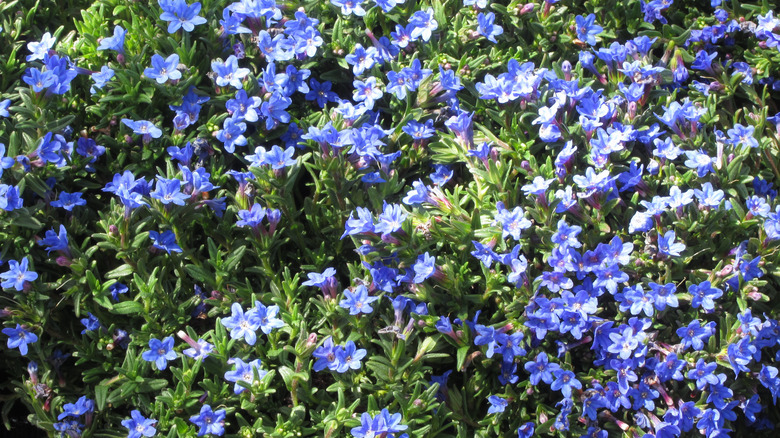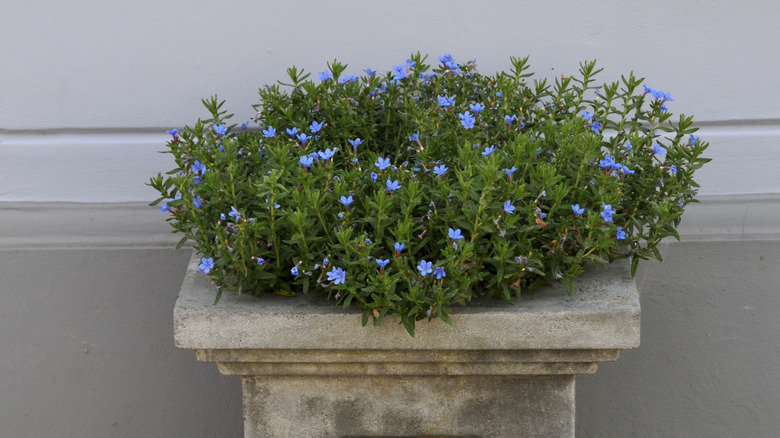What To Consider Before Planting Lithodora In Your Yard & Garden
Are you looking to add a bright splash of azure to your landscape? If so, you might want to think about planting some Lithodora in your yard to compliment any other stunning blue flowers that you might already have. This pretty perennial will astound you with a sea of blue when in bloom and can be used as a ground cover in USDA hardiness zones 5 through 7. A European native, Lithodora will only grow to a maximum height of 12 inches and a spread of up to 4 feet. This delightful plant prefers a little afternoon shade, needs well-drained soil, and moderate watering.
The most common species is Lithodora diffusa, but there are a few attractive cultivars — 'Grace Ward' and 'Heavenly Blue' — that you may find at your local garden center. While the primary species has outstanding brilliant blue flowers, 'Grace Ward' has blooms that are more azure, while 'Heavenly Blue' has striking royal flowers. Lithodora is ideal for rock gardens or cascading over a stone wall. It would also look superb planted in a hanging basket. This species and its common cultivars will be totally covered with dainty blooms from late spring through summer, and you'll find that butterflies are going to flock to your yard to feed on the sweet nectar. As a side note, this species was renamed as Glandora diffusa in 2008.
Tips for growing Lithodora in your garden
If you live in an area that experiences mild summers, Lithodora should thrive in your garden. It prefers to grow in sandy loam which drains effectively and is more acidic than alkaline. While this plant does well in a sunny spot, itwill appreciate a little protection from the harsh afternoon glare if you reside in a hotter climate. Watering this species can be a bit tricky because you should avoid overwatering to prevent root rot. It's always a good idea to familiarize yourself with mistakes to avoid when watering your garden. Essentially, you should let the soil dry out before giving the plant a moderate sprinkle during the warmer months
While Lithodora doesn't require feeding, doing so will prompt lush growth and many more blooms. Ideally, a liquid feed suitable for flowering plants can be applied once a year in mid spring, but make sure you dilute this to half strength. You might find that the center of your plant dies off after it has spread considerably. When this happens, you can prune it back quite hard as this will encourage new growth. Otherwise, the only pruning that's necessary is just to limit the growth and keep the plant more compact, if you wish. As a bonus, this species is not often grazed by deer and will grow nicely with salvia which is another beautiful deer-resistant blue flower that's perfect for your pollinator garden.

